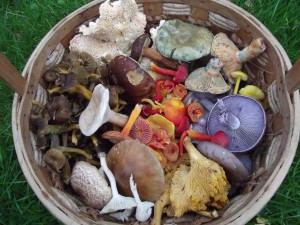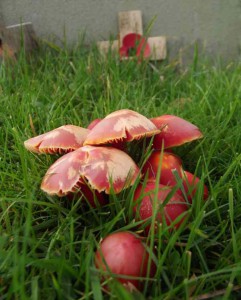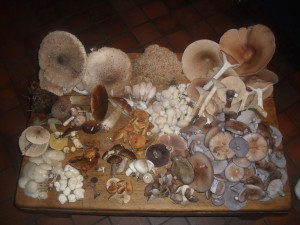Email: geoffdann@hotmail.com
Phone: 07964 569715
11/11/2014
After a stupidly dry September and a stupidly warm October, the weather has finally returned to something resembling normal, and the fungi are now also back to something resembling normal. And in November, that means a riot of spectacular colour. It’s as if the fungi are competing with the deciduous trees: “So you think you’re putting on a bit of a show, do you? Well, see what we can do!” With the exception of some very large and rather ancient (but still edible) chanterelles and hedgehogs, all the species in this basket are typical November species. Well, the prince and the blusher can appear at any time from late summer right through until now, but the rest are late season specialists. The winter chanterelles were a couple of weeks later than normal and are only just coming through strongly in the last few days, those are the first decent crop of blewits I’ve seen south of Northamptonshire this year, there’s a solitary trooping funnel in there and a couple of bay boletes (not a good year for either of those two species, which are both normally abundant in November). The pistachio-coloured orange and green things are saffron milkcaps, but even their rather striking colour scheme cannot compete with the most beautiful of all the edible fungi: the waxcaps (snowy, crimson, scarlet and golden).
I am expecting the next fortnight to be very good for fungi, after the main part of the season was disappointing at best, and largely dismal.



